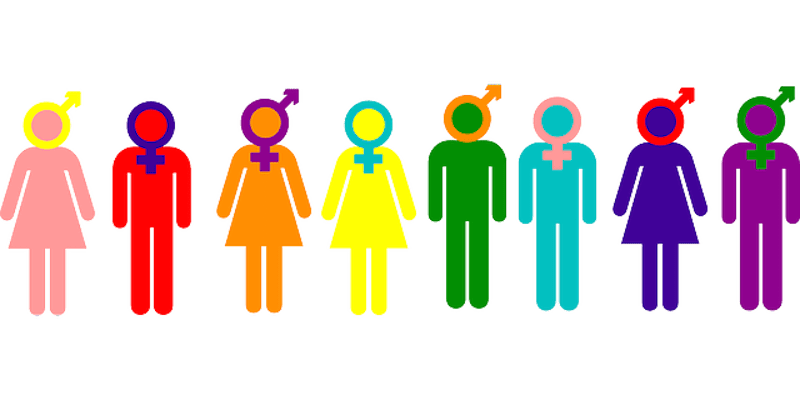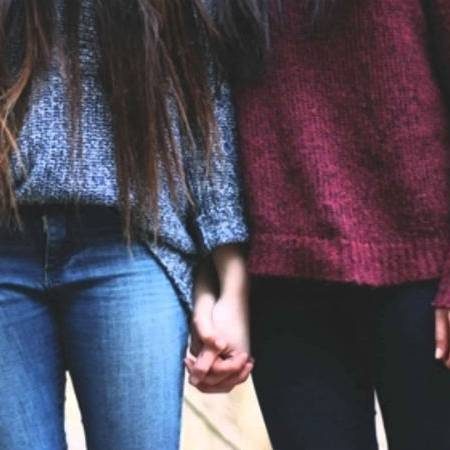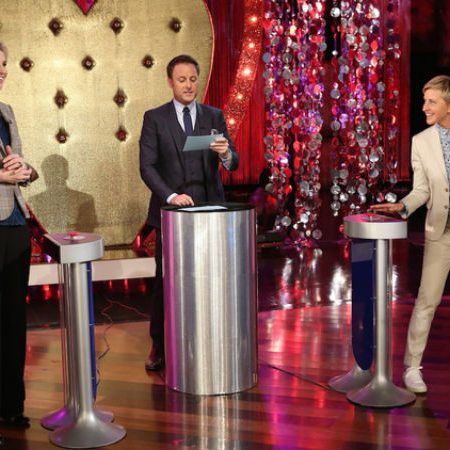 Does Bi really mean an attraction to just two genders and ‘pan’ an attraction to all genders?
Does Bi really mean an attraction to just two genders and ‘pan’ an attraction to all genders?
“Pansexual” is a term that has only relatively recently entered even the dialogue of the wider LGBTQ+ community – let alone fully reached the world in general. It is defined as an attraction to all genders, beyond the binary attraction to just cis-gendered men and women which pansexual-identified people often argue that the word “bisexual” implies. However, many bisexuals argue that the “bi” prefix of “bisexual” simply suggests an attraction to more than one gender, with the potential to encompass all genders. Curve decided to take a look at both sides of this heated semantic argument…
Erik, 30, is the coordinator of the Pansexual Pride Facebook page. “Originally I came out as bisexual in high school, as I feel many within my age range did at the time,” Erik tells Curve. “Pansexual, while it still existed as both a word and an idea, hadn’t taken hold where vernacular is concerned within society yet. When I discovered pansexuality, I knew immediately it was what I had been searching for..” Erik believes that bisexuality does indeed suggest a smaller range of gender attraction than pansexuality, albeit not one limited to just “women” and “men”. “Bi means two. Pan means all. When our understanding of gender was far more limited in scope, it makes sense that bisexual came about as the label. It was originally designated ‘same as’ and ‘different than’. Now that we have a vastly wider spectrum of identities, bisexuality has shifted and grown as well. The most appropriate definition, I feel, to not create bi-erasure is ‘two or more but not all.’”
“I’ve identified as pansexual for seven years – from around the time I learned about the label,” says Ali, 20. “Before that, I thought of myself as just open-minded as I didn’t feel any other terms described the way I felt. I thought of the term bisexual but it didn’t feel right for me. It made me think of having ‘limits’ to who I could like/be attracted to.” She is insistent that “bi” definitely means “two” and doesn’t account for an attraction to all genders. “As far as I know, that’s the ‘official’ definition as well as the meaning/origin of the words. I feel the term pansexual is broader than bisexual in the sense that it leaves room for a broader definition of sex/gender.” Ali is disappointed, however, that the “pansexual”/”bisexual” debate has caused so many divisions. “It’s sad that there’s so much judgement and division in the community. Labels are good in the sense that they make you feel like you belong and help you find others that feel the same but they become negative when they divide and are used to point fingers.”
Jenny, 46, waited even longer to discover the term. “Pansexuality is a label which is treated as just being a ‘cool fad’, even though it’s very real and for many of us it’s something we were waiting for years to hear,” she explains. “I sat uncomfortably with the word ‘bisexual’ until my 40s even though it didn’t seem to define me. Then I heard about the term ‘pansexual’ and realized I’d found my ‘home’ label-wise. Bi means two – and it would stand to reason that this only refers to two genders, not all genders. Now our dialogue about gender is widening and people are becoming more open-minded, there is room to create a new vocabulary in this area.”
Lynnette McFadzen is the President of BiNetUSA. “I identify as bisexual because the community definition encompasses what my sexual orientation is to me,” she says. “My attraction includes all genders. The bisexual community has understood gender was more than two from the beginning. I fear that pushing ‘bi is binary’ erases that history and work. It hurts us. It is simple. Bisexuality encompasses ALL non-monosexuals. It means attraction to one or more genders up to all. Even dictionary.com gives a non-binary definition of bisexuality. This need to push bisexuality as binary is deeply biphobic.” Lynnette believes that even the pan/bi debate is binary in itself. “The need to push ‘one is this and one is that is binary. The notion that one has to be binary and the other non-binary is such heteronormative and black and white binary thinking. None of which is what we are. I encourage people to think deeply about this.”
“We’re now in the third decade of bisexual community leaders describing bisexuality as attraction to more than one gender,” sighs Libby-Baxter Williams, the editor of Biscuit magazine for bi women and others on the female spectrum. “To say it is binarist is simply incorrect. The bi and trans communities have historically got very strong ties – there are more trans and non-binary bisexuals than there are cis ones. It’s quite telling to me that bisexuals get accused of transphobia but gay and straight people don’t. They are literally defined as attraction to one specific gender. That tells me that it’s not about transphobia, it’s about something else.” Libby points out that pan and bi labelling are not mutually exclusive. “Actually a lot of people use both labels,” she says. “But if you don’t use the label bi yourself, you don’t get to say what it is or isn’t. I am bi. I am attracted to more than one gender. My partners have been male, female, cis, trans and non-binary.”
“The first time someone told me that they identified as pansexual because bisexual was inherently transphobic my stomach dropped and it felt like times I’ve experienced biphobia,” says Jessamy, 35. “Without the debate, awareness wouldn’t increase so I think it helps cohesion, but only if the result isn’t pressure for either pansexuals or bisexuals to change the term they prefer to use to self identify. I’d also encourage awareness that some of us have spent decades using the term ‘bisexual and finding that community the only place we feel safe while experiencing biphobia from other queers. So we may read the debate as bisexual erasure and find that difficult for good reason.”
A contentious issue, then, but one which is undeniably inspiring an interesting conversation within the LGBTQ+ community. It brings about the same question that affects many areas of our rainbow. Are we creating too many words to describe our sexualities and in the process creating damaging divisions? Or are we freeing ourselves from uncomfortable labels which we believe don’t serve us and in the process expressing ourselves in terms we feel more aligned with?


